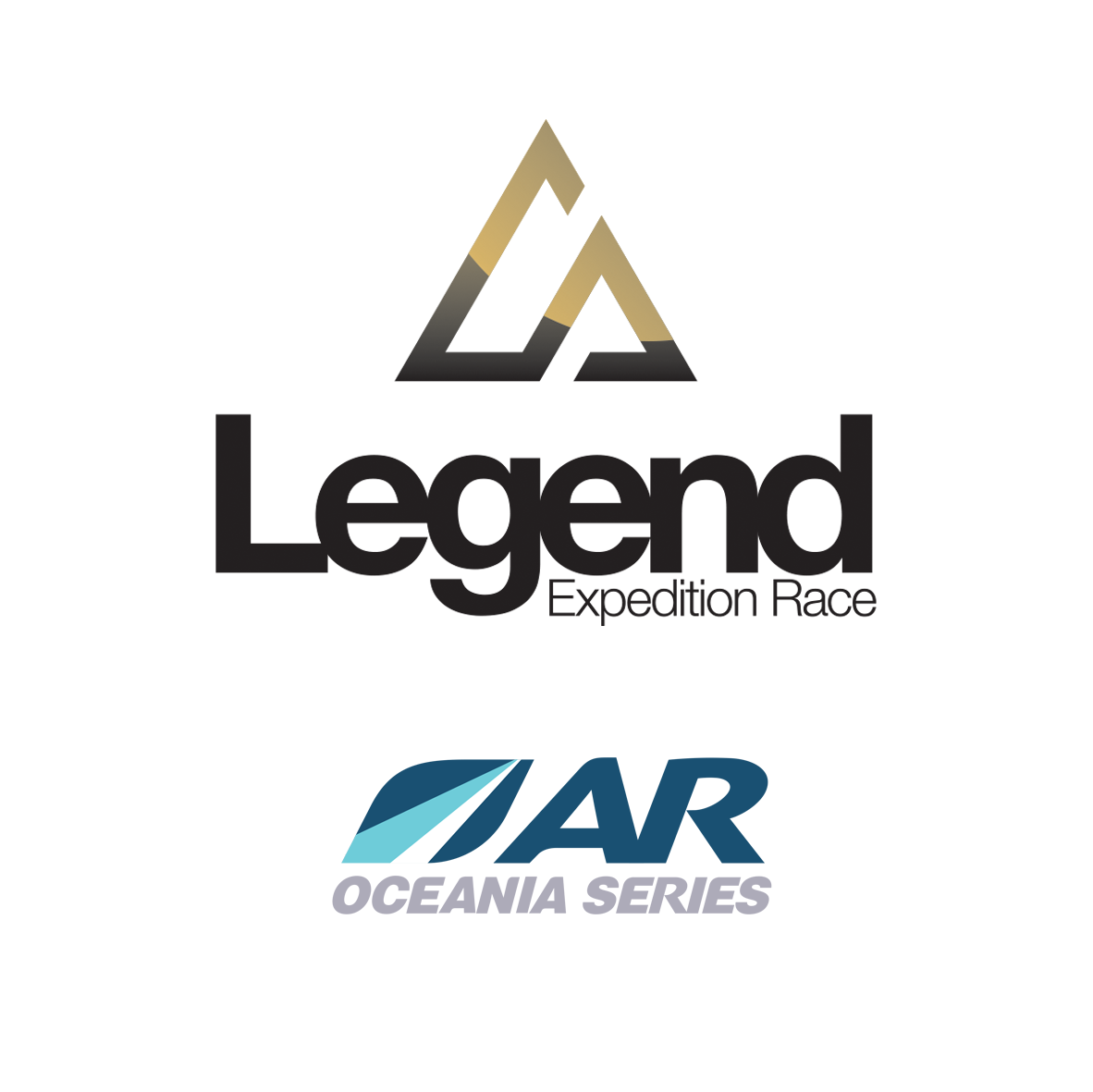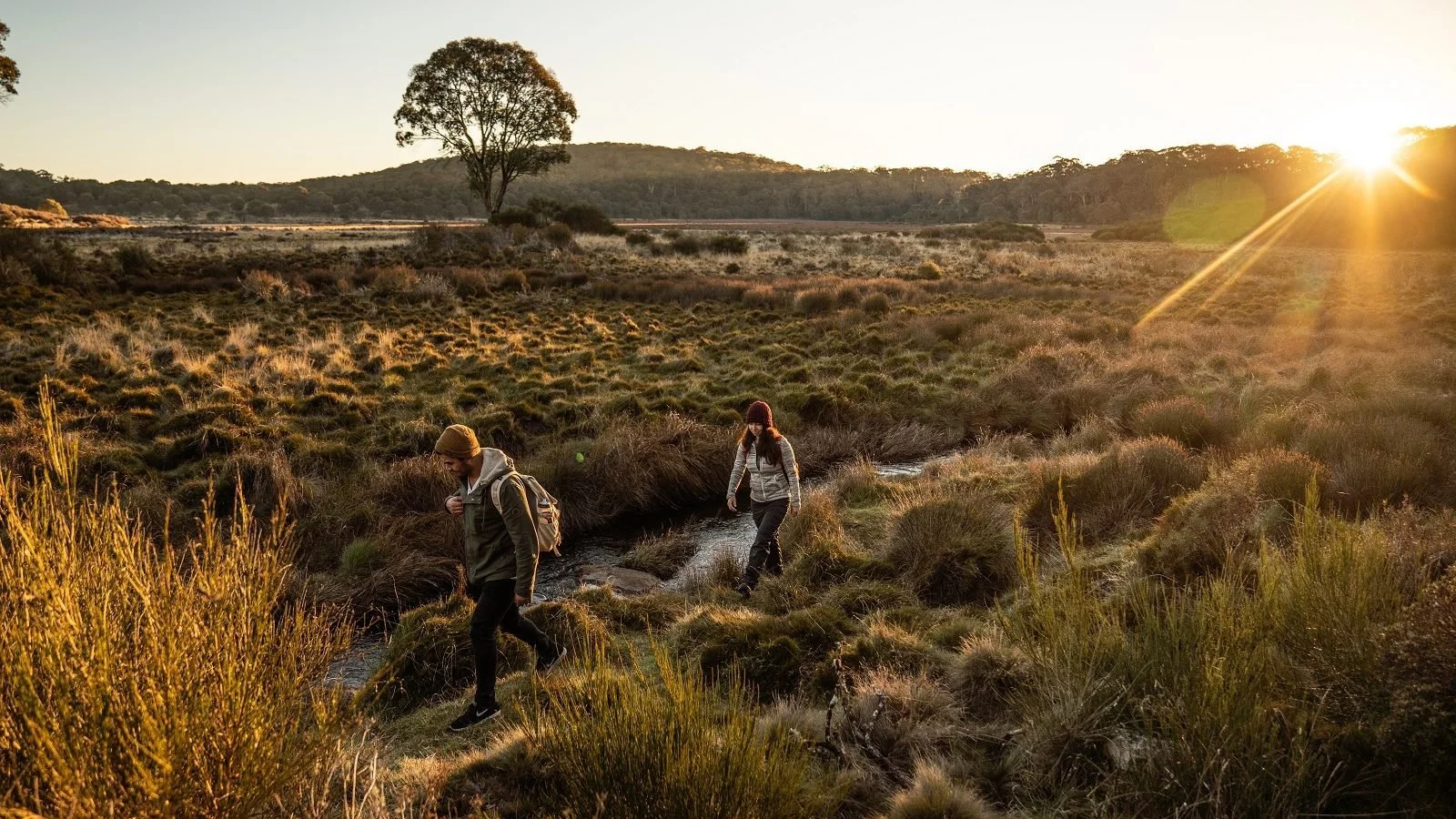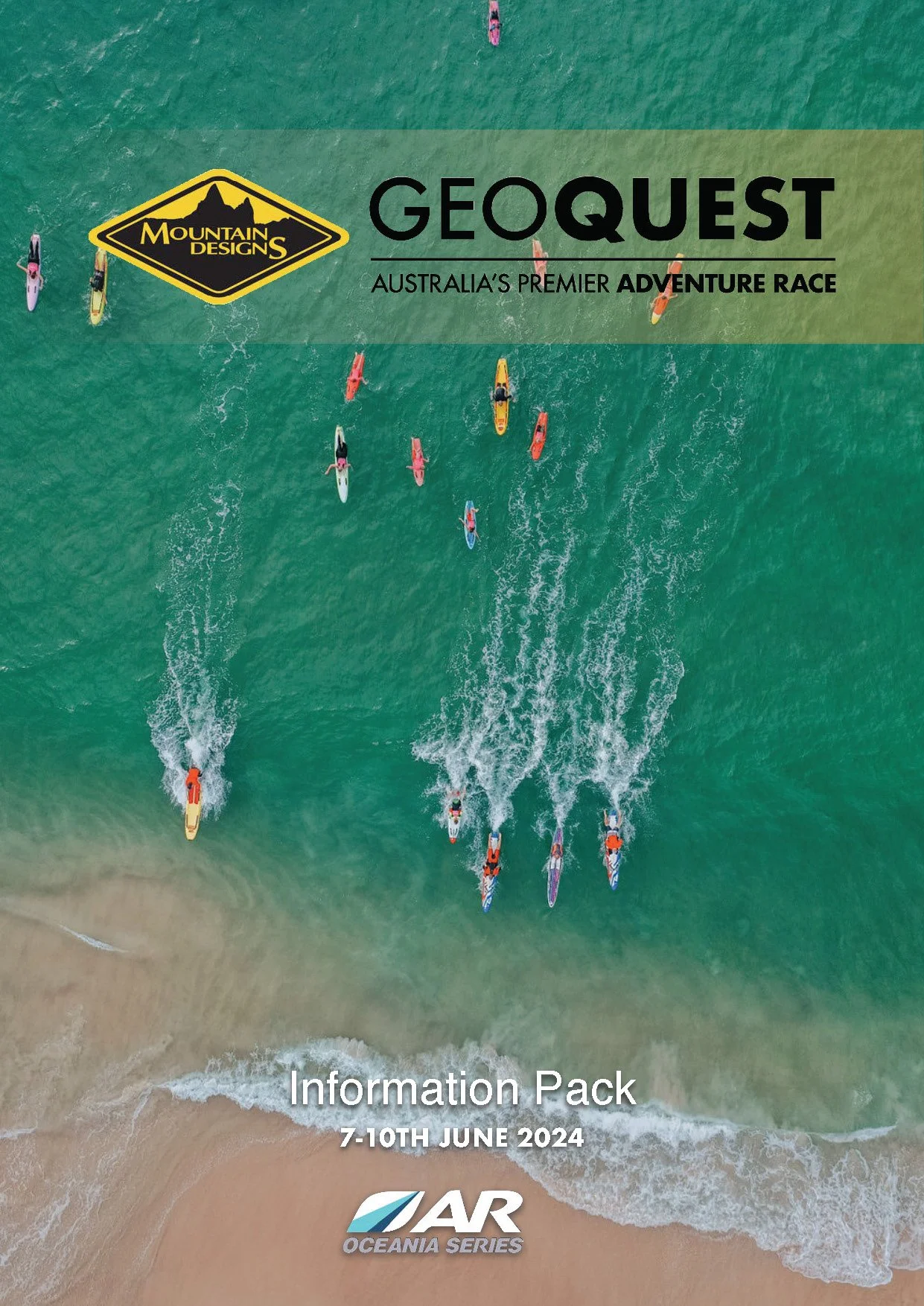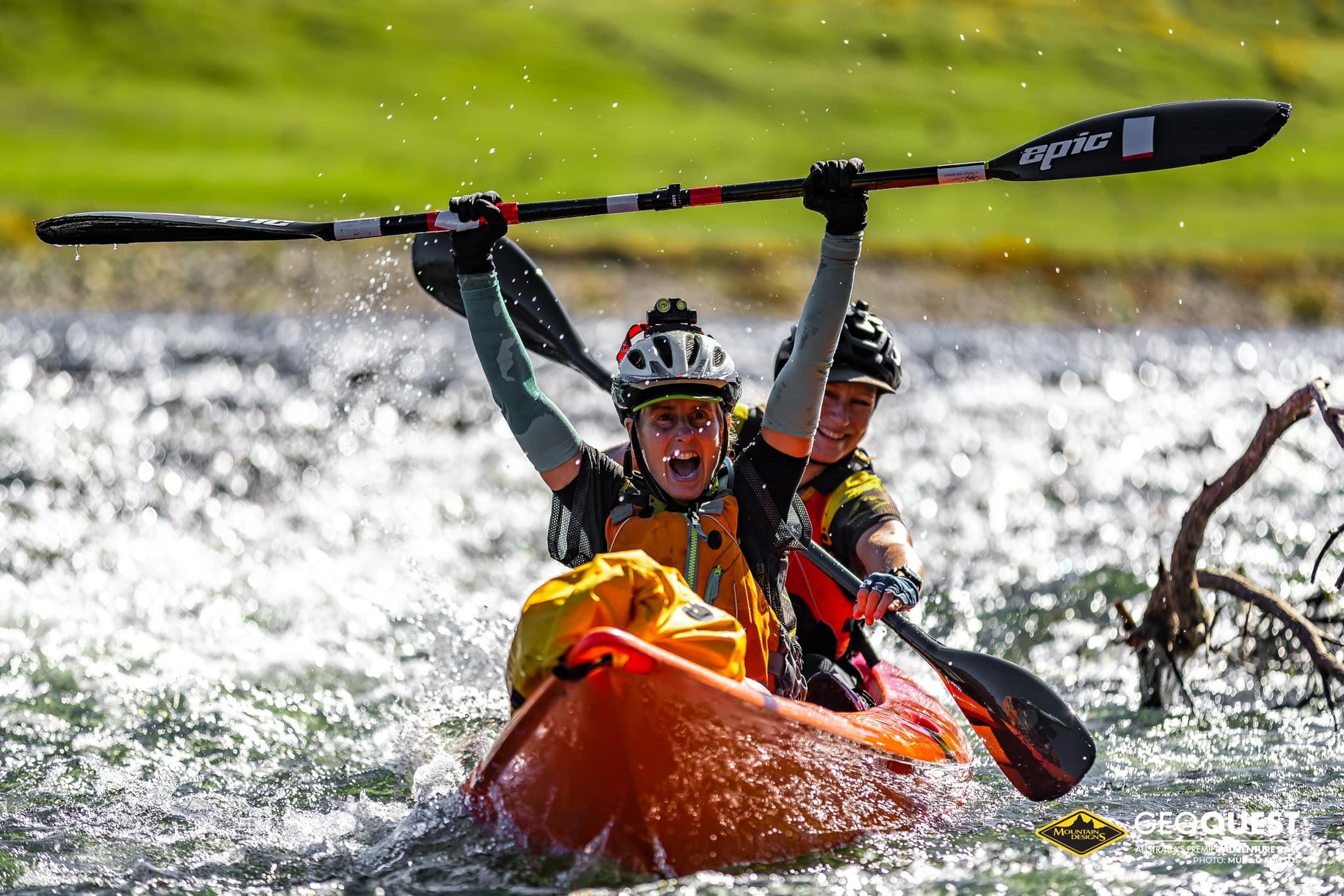Well after the months of preparation including a multitude of Saturday mornings sipping flat whites and lattes at the Coffs Harbour yacht club (with the occasional paddle thrown in) the weekend of Geoquest 2009 had arrived. This year it was based in Forster which was a big change from the other two Geoquests we had done based from Sawtell and Emerald Beach, where some local knowledge certainly was useful. After two reasonable years, lots of previous learning and four fit 40-somethings, we reckoned this year was our’s and we were going to give the all-men’s category and 40 hours a good shake.
The team from last year was largely intact, except for the loss of Mick Dougherty who suffered enormously through last year’s event with the flu and decided to hang up his paddle for this year. His replacement was an ex-local and mate of mine from a Police tactical response unit, Wade (the stunt man). Wade is a big, strong, fit unit but has a couple of serious vices which include alcohol and cigarettes, but neither seem to slow him down at all. The remainder of the team is now well versed in Adventure racing, and included Craig (gadget man) Bulloch, Neil (energiser bunny) Charles and Glenn (guys I think we’re lost again) George.
For those unfamiliar with the event, it broadly consists of kayaking, mountain biking and trekking, with a whole lot of navigating and rogaining (orienteering) thrown in for good measure. The event really can come down to a hare and tortoise type affair, with the navigating component being a critical part of the whole race. The race course itself is not issued until 3pm on the Friday before the event starts, so much of Friday night is spent plotting and mapping out where you are going to go for the next two days. The information handed out includes a course description, up to about a dozen topographic maps and check point coordinates. From there you are basically on your own to plot the points (hopefully correctly) and hit the course.
This year the full course broadly consisted of the following legs:
30km bike
6km trek
35km bike
3hr car transport/break
21km kayak
50km bike
19km trek
5.5km raft (build your own with tubes, rope and timber on-course)
22km kayak
19km trek
12km kayak
And of course you could not complete one of these events without a support crew. The core of our support crew is now well versed in what it takes to look after us, and as always they did an amazing job and once again we were the envy of many teams. They consisted of Tim (falling apart) Cotsell, his partner Caroline (the human blanket), Will (Mr fixit), Michael (the tactician) and Irvo (Wade’s mate and another crazy tact-team man). Tim was always on our case in transitions (as he should be) and they are definitely something we will be working on – an average of 20-30 minutes is possibly a bit long but sometimes it’s nice to get warm!!
From the outset we knew this event was going to be a lot different from past geoquests which usually start with an ocean paddle. The start this year was at the very peak of the Barrington Tops at 1300 metres and 2 degrees celcius for a day of cycling and trekking that was going to see us drop around 1000 metres in elevation. Unfortunately within those big drops also came some VERY big climbs and the ride was much tougher than it sounds. The organisers of these events are most definitely sadists, and they tend to look for the biggest, meanest hills they can find and then send you up some even bigger ones!
Things started well as we arrived at the end of the first bike leg relatively intact and close to the leaders. Unfortunately it quickly went a bit pear-shaped from there as our trek/rogaine saw us take a wrong turn and head down a stream we should have been navigating up – a rookie mistake the likes of which we had not made in the past, and one to put into the memory bank. That small error cost us about 55 minutes and by the time we completed that leg the leaders were long gone as were most other teams and we were already playing catch-up.
Next leg was a SERIOUS mountain bike which included a very big, long climb. Craig and I both suffered a few cramps during this leg, a result of not replacing salts well enough on the first bike leg when we started out well rugged up for the cold, but quickly lost a lot of fluid. Another lesson learnt. Wade was looking amazingly strong, and even assisted Craig by pushing his own bike and Craig’s up one part of the hill. He would huff and puff, cough and splutter and you could see the effect of his smoking, but he would always reach the top of the hill in reasonable shape and recover almost immediately – go figure?? Following the uphill there was a fun steep single track downhill that brought us out along an open spur that revealed the most amazing mountain scenery you could imagine. The views were so spectacular I think I was even enjoying them as I flew over the front of my handlebars (twice) on the way down. Craig also took a nice spill, but fortunately the only damage was to the pride.
Into transition around 4pm and Tim bundled us into the car immediately and we headed straight back to Forster HQ to get some warm food into us and prepare for a 21km paddle up to Coolongolook in the dark. We hit the water around 7pm (our only mandatory break for the whole race) and with our fast double racing kayaks things were going along very nicely until Wade and I headed up what we thought was a channel between oyster leases (the area is FULL of them) only to find out the hard way that we had actually paddled straight into a lease. Unfortunately the impact bent our rudder back into the boat and we lost all ability to steer. With 11-12km to go and no steering it really was a long slog from there. Coupled with the extreme cold (another note to self - should have rugged up better for the paddle) it made for a very trying paddle leg. After what seemed like an eternity we finally arrived at the bike transition at around 10.30pm and spent plenty of time trying to warm up and recover, with most of us shivering uncontrollably for about 20 minutes. Then a fumbling text message to our trusty support crew to fix our broken rudder (just to ensure they were getting NO sleep that night – why should they if we can’t!) and we were off on our bikes.
Well as all long course athletes know, you have your ups and downs along the way. The trick is to be able to push through the lows knowing (hoping) things will get better. And I would have to say the next 30 minutes were some of the hardest (mentally) that I have experienced. The problems with the kayak rudder had meant I had put in a huge effort on the last leg and it was telling on me. I had developed a severe headache like nothing I have experienced before, like someone had my head planted in a vice squeezing on each temple and was turning it hard. And the next creek crossing on our bikes certainly did not do anything to lift spirits. The former bridge had been washed out in the recent floods and the water looked at least waist deep. After just stopping shivering and putting on some semi-dry clothes, there was no way any of us were ploughing straight through that. So it was off with the shoes and socks and carry the bike around the long way – possibly another 10 minutes wasted but it was worth it!!
Soon after I started coming good and we were off again. Spirits were lifting as it was a beautiful starry night – where else would you want to be! A couple of check points down the road and we caught up with some other Coffs friends who were competing in the half and looking great. We did a few laps of a few roads together trying to locate ourselves and find the next checkpoint, which we eventually did before saying adios and riding off into the night on our trusty steeds. The remainder of the night saw us accumulate all but one of the bike check points (we were allowed to drop as many as three) and arrive in Buladelah for the next trek at daylight.
The number of check points you needed on the next trek depended on how many you dropped on the bike leg. Unfortunately we had elected to drop an out and back check point on the bike that was an easy, flat ride - another small tactical error for next time. Our team was definitely far stronger on the bike than on foot, and it is amazing the amount of time you can waste in the hills, in thick scrub, on foot.
Heading east from Buladelah we encountered an unexpected obstacle – a very colourful local female resident had not taken well to the sound of people’s voices passing her house since 2am and had taken it upon herself to provide most of the early teams with a nice cold shower from the front-yard hose. Fortunately all we received from her (even though we were not talking) was a good verbal spray. Naturally Wade gave as good as we got and we continued on our merry way. At the top of the cliffs above Buladelah there was another interesting leg – one of the team members had to climb to the top of a sheer rock wall (with rope safety guides in tow). Of course Wade was quickly nominated (the man rappels down elevator shafts and from helicopters with no safety gear, who else!!). While Charlie, Craig and I enjoyed a nice 10 minute rest, Wade was off and into the climb. We were told nearly every team so far had made the climb within the allocated time, so of course this would be a snap for our stunt man. So you can imagine our surprise when the radio message came back – team 42 fail, 18 minute penalty!! Unfortunately for us it had just started drizzling about ½ hour earlier, and the slippery rocks had made the climb all but impossible. So we all sucked it up and sat there having a very nice rest for another 18 minutes (funny how no-one complained).
The rest of the trekking leg to Myall lakes was through some extremely steep, thick scrub country and was very trying at times. Some of the trails were very overgrown and difficult to spot, and at one stage a wrong decision saw us trying to travel down the side of a heavily overgrown mountain looking for a mystery track below. After hitting impenetrable lantana about half way down the 30 degree slope it was a quick consult and backtrack up the hill, re-group and re-assess. Eventually we got out and even managed to run some of the flat sections (which were rare) as we neared the lake around midday.
The next leg was an interesting one. We were required to construct a raft using 8 tyre tubes, four lengths of framing timber and two lengths of rope, and then paddle 5.5km including a short section where we would have to carry the raft across an island. By all accounts there had been some very good ones and some major disasters prior to us. As it turned out our boat, which we had designed with the expectation of only having to paddle across a river for a couple of hundred metres, held up OK. It was a very difficult, trying leg and certainly we were passed during the leg by a couple of teams with far superior designs, but in the end we got there.
Straight off the rafts and naturally the shoulders and arms were seriously tired. What more could you want following a two and a half hour rafting session on a complete piece of crap than a 22km paddle on the pristine waters Myall Lake, just to burn off a bit of the lactate! Well pristine it was and pretty quickly the rafting debacle was forgotten and we were into our rhythm. There was no wind, few clouds and it was just on sunset. The lake was superb and this leg actually flew by very quickly indeed (except for the 1km boat portage across land from one lake to another).
Our arrival just after dark at the next transition again saw our trusty crew awaiting us with all of our gear set up and ready to go. However there was to be absolutely nothing quick about this transition. As luck would have it a very enterprising coffee shop owner (who usually closes at 3pm on a Sunday) was still open about 50m away and there was only one thing for it. The orders were submitted and in between handling gear and keeping me warm, Caroline found some time to pick up four take-aways that were made in heaven!
The logistics of what to take and wear for this last 19km trek were interesting. Near the start there was a tubing section, meaning we had to cross a large body of water using one tyre tube each and our life jackets, which we had to then carry for the remainder of the trek. On top of that there is a range of compulsory gear you MUST have on you at all times, including thermals, medical, goretex jackets etc. etc. At 35 hours and no sleep just thinking straight about what to take and what to wear was getting difficult, but we eventually sorted it and following another slick ½ hour transition we were off.
After negotiating the tubing section quite quickly we were on our way into what turned out to be a very eventful leg. On plan the navigation on this leg looked simple, however in the dark it was far from. The tracks and trails were very difficult to find and more than once we had to hike it cross country and off-trail following a compass bearing. Then to throw a real spanner in the works, about half way through this leg Wade tore his calf muscle while negotiating a fence. From there it was a very slow walk/stumble dragging/pushing Wade up some very big hills, but fortunately we eventually came across some other teams that were also finding the navigating tough and together we found a way through to Blueys Beach. A quick call to Irvo and he was on the way to pick up Wade. With only an hour and a half or so of trekking left but some big hills still to negotiate, Wade was in no shape to continue on foot so we handed him over to the car and he took a well earned rest near the next transition whilst waiting for us.
After doing some slow walking for the last hour or two, we were now getting a very strong second wind and started running again. It was amazing to see just how many teams you pass and how much time we were making up whilst running. The remaining hills and a final 4.5km beach run to the final transition saw us feeling really good, possibly the best of the whole race. Maybe it’s because we were so close! At one point along the beach without about 1.5km to go we became perplexed by the sight of a light headed our way. Our first guess turned out to be right, it was our nutter mate Irvo going for a nice light run at 1am in the morning! He had taken it upon himself to “cache” Wade in his car in the sandhills to wait for us, so Wade could walk with us into the final transition. These tact team guys really are endurance fanatics, and after doing security stints in places like Iraq and Afghanistan I guess a run at 1am on a Monday morning is small-fry.
As it turned out, many teams had huge problems with the final trek leg, and several actually pulled out due to a combination of hypothermia and getting lost. We had made up a lot of places and were now actually leading the all men’s teams race.
The final transition must have been our slickest of all, 10-15 minutes and we were in our boats and gone. On Friday night we had set a goal to make the outgoing tide and we had done so by the skin of our teeth. One more checkpoint on an island on the way and we were paddling back into Forster and the finish. The finish has very little fanfare (as you can imagine at 3am on a Monday morning), just a little different to an ironman! But we had our support crew there, and that’s all the fanfare we needed. Some pizza and beer to help “come down” and by a bit after 4am we had all crashed. All in all it was another amazing event. Unfortunately, although we had crossed the line first in the all men’s teams event, we were placed un-ranked due to the transport Wade had received. But who cares, we had competed and we had finished in 42 hours and 40 minutes.
Logistical planning is possibly one of the biggest areas that really sets this event apart. There is no food or water out on the course, it’s just you and your team and your backpack. A great deal of thought needs to be put into planning what you will eat and when, where you can re-stock and what clothes and gear you will need. Add to this the fact that your planning can really only be finalised on the Friday night before the race when you know the course (while you are still trying to map it out and plan it) and it really does make for a massive logistical exercise.
The navigating also offers a very different, technical element. Couple that with the constant changing from bike to boat to foot and back again and it is an extremely challenging event. There really is no point watching the clock, you just go and you keep going and going and going. If you need to walk, you walk, no ifs or buts. The time you spend actually running is quite limited, it’s just too far to run up (or sometimes even down) hills, especially given they are mostly in scrub and very steep. You have four people out there to look after, so you also need to think a lot further than just yourself. You must all stay within 100m of each other at all times, always watching each others backs.
A lot of people from our local triathlon club have asked how the difficulty of this event compares to an ironman triathlon. This type of event really is a completely different mind-set, and I can’t answer that question. Both have their difficult elements, and it really comes down to your own personal expectations and how hard you can (or are wiling) to push. In ironman it’s just you and the course and your body. In this event there are so many other elements thrown into the mix. I guess what I would say is that mentally this event is possibly tougher, and I think you learn even more about yourself in an event like Geoquest where you are committing to go almost non-stop for two days – in anyone’s book that is a hell of a long time. Bring it on!!!!!!

















